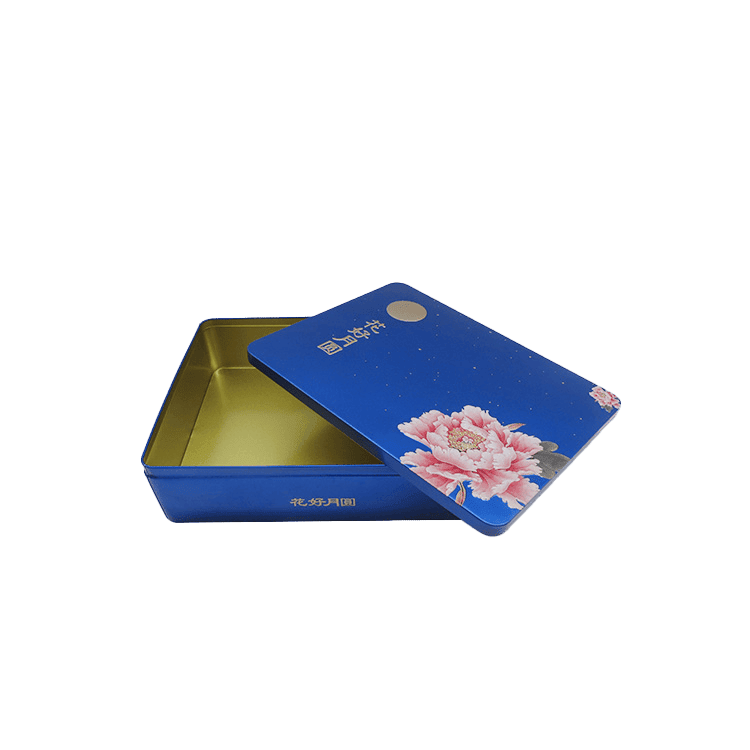
Designing eco-friendly cosmetic tin packaging requires a focus on sustainability, aesthetic appeal, and practicality to both attract environmentally conscious consumers and provide a useful container for the product. Here are some design suggestions for creating such packaging:
### 1. **Material Choices**
- **Recycled Tin**: Use tin materials that are partly or fully recycled, reducing the need for new resources.
- **Reusability**: Design the tins to be easily repurposed after the product is used, such as for storing small items or as travel containers.
### 2. **Minimalist Design**
- **Simple Graphics**: Opt for clean lines and simple graphics that convey a sense of natural elegance and reduce the amount of ink used.
- **Neutral Palette**: Use a color scheme derived from natural tones, or opt for the natural color of the tin with minimal coloring for a classic look.
### 3. **Eco-friendly Finishes**
- **Soy-based or Vegetable Inks**: When printing on the tins, use inks made from soy or other sustainable materials.
- **Non-toxic Coatings**: Ensure any protective coatings are environmentally friendly and safe for both users and the environment.
### 4. **Informative Labelling**
- **Eco Credentials**: Clearly state the eco-friendly aspects of the packaging on the label, such as "Made with 100% Recycled Materials."
- **Disposal Instructions**: Provide information on how to recycle or repurpose the tin after use.

### 5. **Functional Design**
- **Easy to Open**: Ensure the lid is easy to open and close, possibly with a screw-top design for tins containing creams or powders.
- **Protection**: The design should protect the cosmetic inside, perhaps by including an inner lining or seal for freshness.
### 6. **Customization and Personalization**
- **Engravable Surfaces**: Offer a space on the tin where consumers can have names or messages engraved, increasing the perceived value and likelihood of repurposing.
- **Interactive Element**: Design the label or a part of the tin where consumers can write the purchase date or track usage.
### 7. **Brand Consistency**
- **Consistent Imagery**: Ensure that the eco-friendly design still reflects the brand's image and values.
- **Typography**: Use typography that is both readable and in line with the brand's aesthetic.
### 8. **Sensory Experience**
- **Texture**: Consider adding a tactile element to the packaging, such as embossed patterns or a matte finish, to enhance the user experience.
- **Aromatic Inks**: If feasible, use inks that can emit a subtle fragrance related to the product inside, appealing to the sense of smell.
### 9. **Stackable and Space-efficient**
- **Shape**: Design the tins to be stackable to reduce the space needed for transportation and storage, leading to a smaller carbon footprint.
### 10. **Educational Aspect**
- **Tips for Sustainability**: Include tips or ideas for repurposing the tins, promoting a sustainable lifestyle beyond the product itself.
### 11. **Seasonal and Limited Editions**
- **Special Editions**: Offer limited edition designs for certain times of the year, using designs reflective of the season or holiday while maintaining eco-friendly practices.
### 12. **Size Options**
- **Variety**: Provide different sizes for different needs, catering to both occasional users and regulars, while encouraging the use of larger, more resource-efficient packaging when appropriate.
### 13. **Storytelling**
- **Brand Story**: Share the brand's commitment to sustainability and natural beauty through imagery or narratives on the packaging, creating a deeper connection with the consumer.
### 14. **Transparency**
- **Window Cut-outs**: Where possible, include a small window using biodegradable or recycled plastic to show the product inside, reducing the need for consumers to open the packaging.
By integrating these design elements, your eco-friendly cosmetic tins can attract consumers who value sustainability without compromising on design quality or product protection. The key is to balance the aesthetic, functional, and environmental aspects to create packaging that stands out in the market and aligns with the eco-conscious values of the brand and its customers.